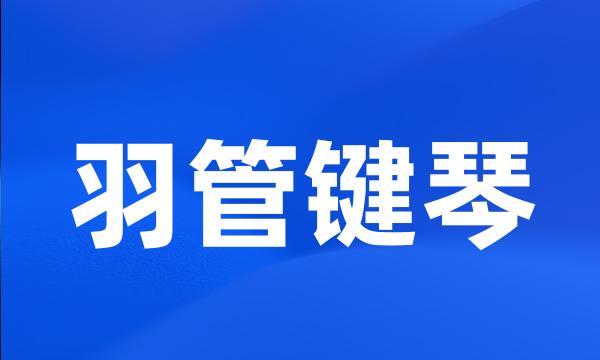羽管键琴
- harpsichord
 羽管键琴
羽管键琴-
据巴赫最早的传记作者Forkel说,巴赫很不情愿在羽管键琴上演奏自己的复调作品。
Forkel , one of Bach 's earliest biographers , tells us that Bach himself was not too happy whenever he had to perform particularly his polyphonic pieces on the harpsichord .
-
巴赫是让羽管键琴带头呢还是让小提琴带头?
Did Bach lead from the harpsichord or the violin ?
-
玛丽。王在曼哈顿音乐学院学习钢琴、羽管键琴以及指挥。
Mari Hwang studies piano , harpsichord and conducting at the conservatory .
-
我的羽管键琴需要新的琴弦。
My harpsichord needs new strings .
-
羽管键琴家,早期音乐运动之父古斯塔夫.莱昂哈特于1月16日去世,享年83岁。
Gustav Leonhardt , harpsichordist and father of the early-music movement , died on January 16th , aged 83 .
-
他带着一种殡仪师的气质慢慢走近他的羽管键琴,轻轻地扭动一下他那纤细修长的双手。
He approached his harpsichord with the air of a mortician , slightly flexing his long , delicate hands .
-
莱昂哈特先生的毕生心血都花在让世界了解羽管键琴是多么美好的一种乐器,以及应该怎样弹奏羽管键琴曲目上面。
Mr Leonhardt 's life-work was to persuade the world how beautiful the harpsichord was , and how the harpsichord repertoire should be played .
-
他决定要让羽管键琴重拾它原本那种简单的声音,那种“是盐,而不是糖”的声音,约翰·塞巴斯蒂安·巴赫当初就是为这种声音作曲的。
He intended to restore it to the simple , original sound , " salt rather than sugar , " that Johann Sebastian Bach had written for .
-
1950年他开始在巴塞尔正式学习羽管键琴,当时这种乐器要么被人忽略,要么就是用来表现浪漫风格的甜蜜感,这种情况已经有几十年了。
When he began to study harpsichord seriously , at Basel in 1950 , the instrument had been neglected , or overlaid with Romantic sweetness , for decades .
-
这部协奏曲通篇都在展示羽管键琴和演奏者的技巧,特别是第一乐章繁长的独奏华彩段。
The concerto is well suited throughout to showing off the qualities of a fine harpsichord and the virtuosity of its player , especially in the lengthy solo'cadenza'to the first movement .
-
多梅尼科·斯卡拉蒂(1685&1757)是巴罗克时代伟大的作曲家、羽管键琴演奏家和教育家,与巴赫、亨德尔一起并称为巴罗克三杰。
Domenico Scarlatti ( 1685-1757 ) was a great composers , harpsichord performer and educator in the Baroque Era . The Three Masters in Baroque Era were Bach , Handel and Domenico Scarlatti .
-
其二,对于自己的很多作品,巴赫本人更喜欢在击弦古钢琴而非羽管键琴上演奏,因为前者提供了更多微妙的描明摹暗的可能。
The other is that Bach , given the choices available in his time , preferred many of his pieces to be played on the clavichord with its wider possibilities of subtle shading .
-
他继续努力,在1953年录制了一张巴赫《赋格的艺术》的权威唱片,同时出版了一篇热情洋溢的论文,提出这首曲子并不是为了合奏,而是为了羽管键琴独奏而写的观点。
He continued by making a definitive recording in 1953 of Bach 's " Art of Fugue , " and publishing an impassioned argument that the piece had been written for solo harpsichord rather than ensemble .
-
莱昂哈特先生在维也纳和阿姆斯特丹教琴时,他从不同时带超过五个学生(这些学生中很多后来成为了著名的羽管键琴家),他从不将任何演奏方法强加于他们。
When Mr Leonhardt taught in Vienna and Amsterdam , never taking more than five pupils at a time ( many of them becoming distinguished harpsichordists in turn ) , he never imposed a method on them .
-
多年来他一直努力寻找最正统的复古羽管键琴,他的爱琴来自不来梅的马丁·斯科罗耐克琴厂,在他的巨大客厅中占有中心位置,是由18世纪的木材制成的。
For years he laboured to find the most authentic replica harpsichord ; his favourite , by Martin Skowroneck of Bremen , which had pride of place in his huge drawing room , was made of 18th-century woods .
-
当初,他父母替位于荷兰格雷弗兰村的房子买了一台音质很差的羽管键琴,从那时起他就爱上了这种乐器,认识到它是键盘乐器之王。
When he first fell in love with it , in the shape of the fairly bad instrument his parents bought for their house at Graveland in the Netherlands , he recognised it as the king of keyboards .
-
所有这些乐器都没有琴拨在琴弦上的直接拨动,而这正是他热爱羽管键琴的原因。不过同时要掌握这种发声机制也费劲得令人害怕,简直有如“恶魔”一般,这也是为什么他在演奏时从不微笑的原因。
None had that direct pluck of plectrum on string for which he loved the harpsichord - though that mechanism was also fearsomely exacting , even " diabolical , " and that was why he did not smile as he played .
